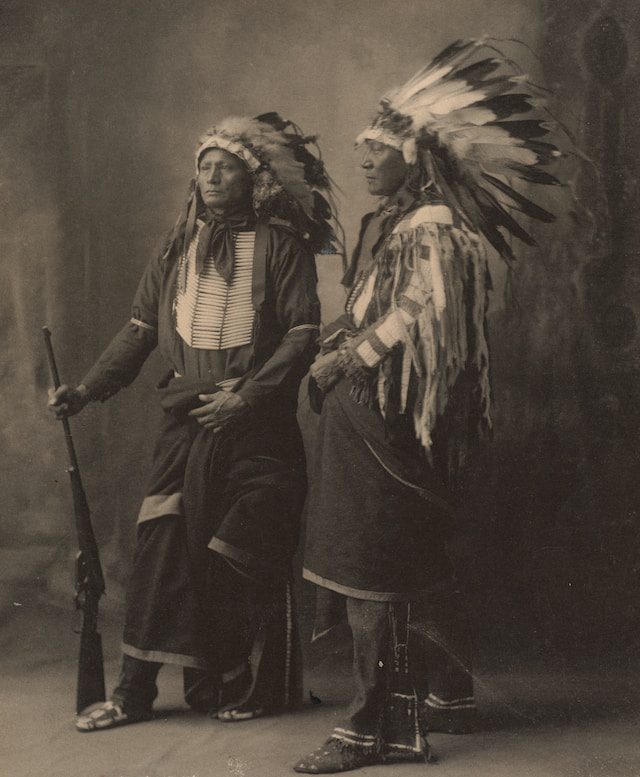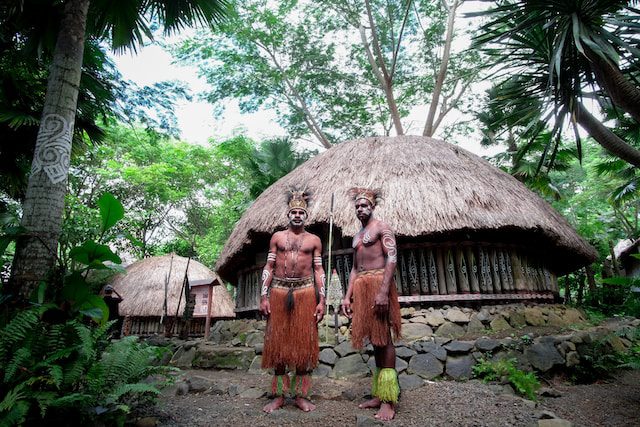The Apache Tribe: A Brief History and Overview
The Apache Tribe might be characterized as fierce warriors of the Southwest, caretakers of prehistoric lands, and protectors of a thriving cultural heritage. This Native American tribe recounts a tale of bravery, and a deep connection to the land with a history built in the untamed regions of North America.
The Apache Tribe, with its nomadic customs and famed warrior culture, is a tribute to the unbreakable spirit of a people whose history unfolds like a spellbinding narrative. Let us explore the Apache Tribe’s fascinating history and uncover the rich tapestry of their ancestry plus the lasting impact they have on the American Southwest.
1. The origins of the Apache tribe traces back to parts of Canada and United States

Photo by Boston Public Library on Unsplash
The migration from northwest Canada into the southwestern United States is thought to be the source of the Apache Tribe’s history. The Apache people speak a language that is a part of the wider Athabaskan language family. This includes a number of indigenous groups dispersed over western North America.
Around the 12th century, it is thought that the Apache people moved from northwest Canada to the southwest region of the United States. This is where they settled. The Apache Tribe is not a monolithic tribe. It consists of a number of separate bands and divisions, each with its own distinct cultures and regions.
Read these 35 mazing facts about Canada
2. This tribe has several tribal divisions
There are various separate groups that made up the Apache Tribe. Each tribe had its own distinctive customs and geographical range. The Western Apache and the Eastern Apache are the two main divisions. The White Mountain Apache, San Carlos Apache, and Tonto Apache were examples of the Western Apache tribes.
On the other hand, the Chiricahua, Mescalero, and Jicarilla Apache were some examples of the Eastern Apache tribes. The Western Apache division contained Apache tribes that predominantly occupied Arizona’s mountainous terrain. The Eastern Apache division on the other hand was made up of Apache tribes that mostly lived in Texas and New Mexico.
3. The Apache were nomads

Photo by Boston Public Library on Unsplash
The Apache Tribe is well known for their traditional nomadic way of life. This way of life was essential to their cultural customs and survival. The Apache were a semi-nomadic tribe who traveled over large lands using the resources of various habitats and the seasonal movements of game animals.
The Apache people lived in different environments. Examples are plains, plateaus, deserts, and mountains. They were able to adapt to these habitats thanks to their flexibility. Access to a variety of food sources, including wild vegetation, game animals, and natural resources like water and timber, was also guaranteed with the nomadic lifestyle.
Click to read about the 10 interesting facts about the Oregon trail
4. The Apache people had a warrior culture

Photo by Surya Prakosa on Unsplash
The warrior heritage of the Apache Tribe is well-known. Apache warriors were courageous and skillful combatants. The tribe often got into fights with Spanish, Mexican, and American settlers as well as other Native American tribes. They created complex battle plans that included ambushes and hit-and-run maneuvers. They also profited from their in-depth familiarity with the area.
5. These people had structured leadership
The Apache people were divided into bands. Respected chiefs or leaders served as the heads of each band. These persons were picked as leaders because of their insight, bravery, and leadership skills. The tribe used a public participation process to make decisions. Before making crucial decisions, the leaders got feedback from the community. This feature greatly improved the credibility of leaders.
Read more about these 18 most famous Indian kings and emperors
6. The Apache tribe had several cultural practices

Photo by Jonas Geschke on Unsplash
The cultural heritage of the Apache people is vast. It includes customs, rituals, and creative representations. Storytelling, song, dance, and fine workmanship are important cultural practices. The importance of traditional ceremonies and spirituality are both fundamental to Apache culture.
The purpose of these rituals was to preserve harmony and balance in the natural and spiritual worlds. They were performed by spiritual leaders or medicine men. The Dawn Dance and the Puberty Ceremony are two examples of Apache rites. The Apache people are also well known for their complex designs on clothes as well as their basketry, ceramics, and beadwork. Basket weaving was highly valued in this community.
7. The history of the Apache people demonstrates great resilience
The introduction of European settlers posed serious problems for the Apache people. This was the situation for many other Native American groups as well. They went through territorial disputes, evictions, and attempts at assimilating into other cultures. Despite these difficulties, the Apache Tribe has shown fortitude by maintaining its language, cultural customs, and tribal identity.
8. The Apache tribe still have an impact on society today

Photo by MJ Tangonan on Unsplash
The Apache Tribe is still strong today. It has preserved its distinctive cultural history. Several Apache tribes have set up tribal governments, educational initiatives, and cultural institutions. The purpose is to support its members and promote their traditions.
The Apache people also make a positive impact on society at large through activism, music, art, and efforts to safeguard their ancestral lands. The Apache Tribe maintains its self-governance. They have created tribal governments that are acknowledged by the US government. The tribal administrations have jurisdiction over their land. Tribal councils and leaders work to safeguard and advance the interests of their people.
9. The Apache had interesting warfare tactics
The Apache Tribe created clever military strategies that made them a dangerous foe. They were skilled in guerrilla combat. Their warriors were renowned for having the capacity to attack quickly and vanish into the rough terrain of their land. The advantages of Apache warriors included their mastery of the terrain, stealth, and concealment. Due to this, they became a force to be feared when battling other tribes and European settlers.
Check out these 15 historical facts about the French and Indian war
10. Women played several roles in Apache community

Photo by Boston Public Library on Unsplash
In Apache society, women had a lot of power and were vital members of their communities. As healers, spiritual authorities, and stewards of historical information, they enjoyed respect. Due to the tremendous significance placed on their ideas, Apache women had the ability to influence important decisions. Women were also free to own land, carry on business, and take part in tribal rituals.
The Apache Tribe emerges as a gripping thread that connects tales of tenacity, warrior spirit, and cultural legacy in the fascinating fabric of Native American history. Their progression through history portrays a people who were profoundly rooted in the soil and who adopted a nomadic lifestyle amidst the arid Southwest regions. The Apache Tribe is a prime example of the resilience and variety of indigenous cultures, from their renowned fighting strategies to the important responsibilities that women play in their society.
Planning a trip to Paris ? Get ready !
These are Amazon’s best-selling travel products that you may need for coming to Paris.
Bookstore
- The best travel book : Rick Steves – Paris 2023 – Learn more here
- Fodor’s Paris 2024 – Learn more here
Travel Gear
- Venture Pal Lightweight Backpack – Learn more here
- Samsonite Winfield 2 28″ Luggage – Learn more here
- Swig Savvy’s Stainless Steel Insulated Water Bottle – Learn more here
Check Amazon’s best-seller list for the most popular travel accessories. We sometimes read this list just to find out what new travel products people are buying.









